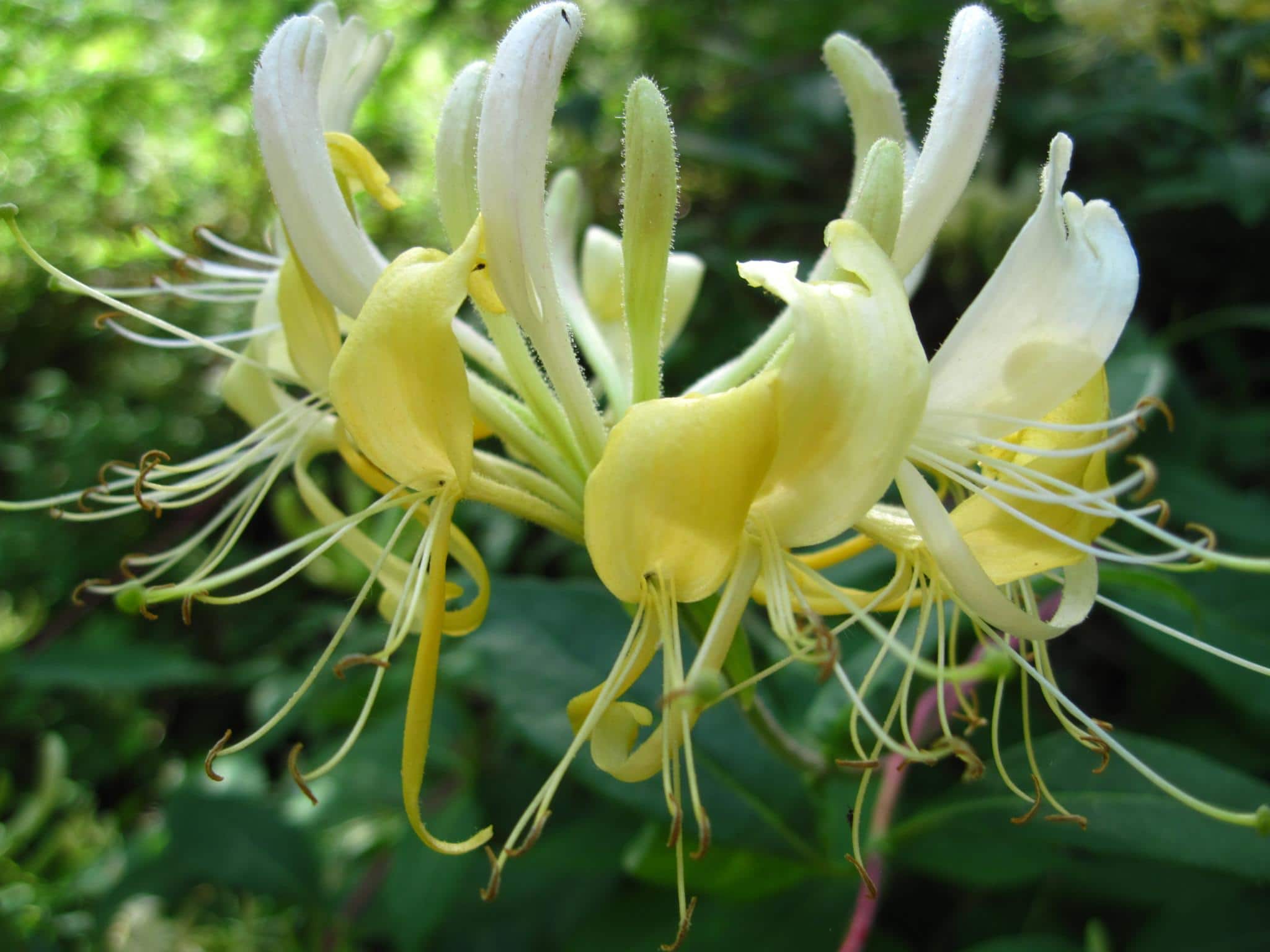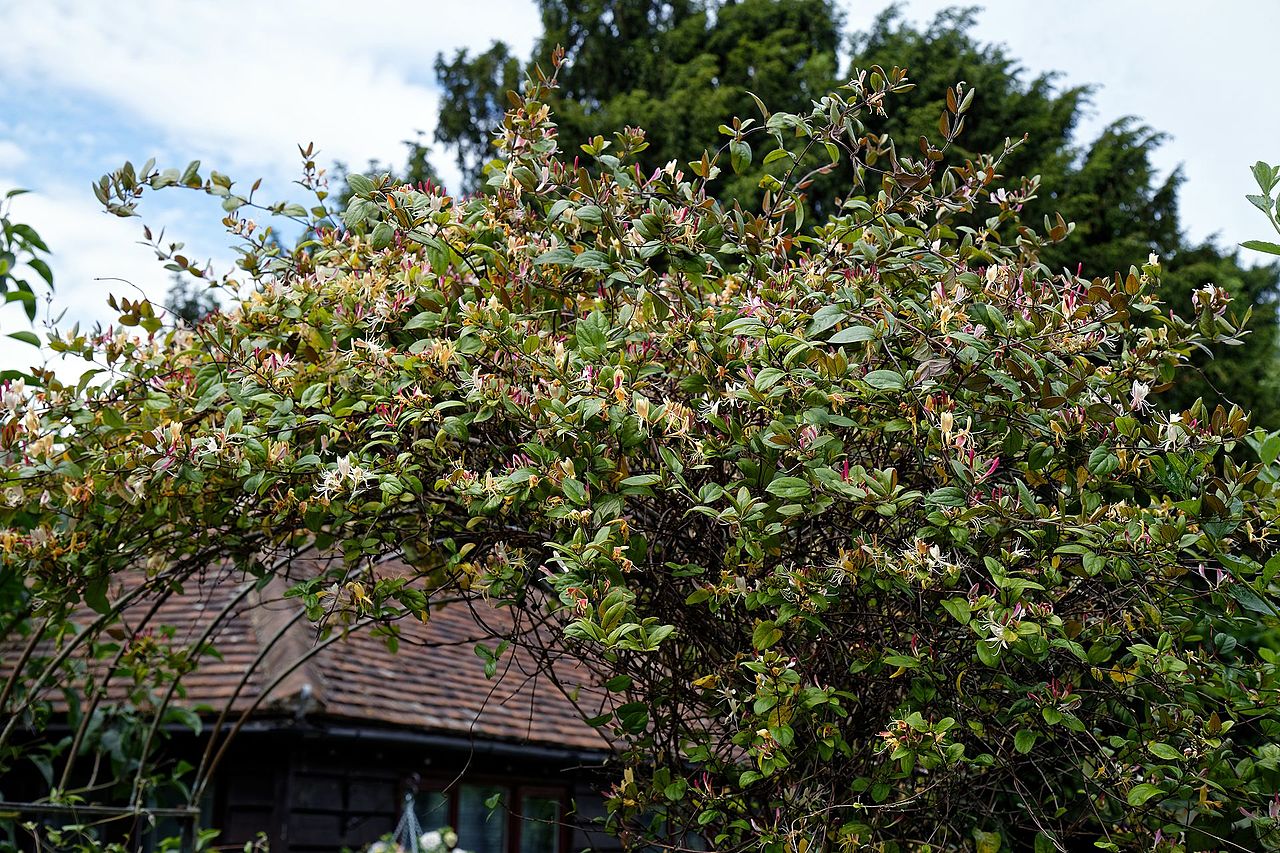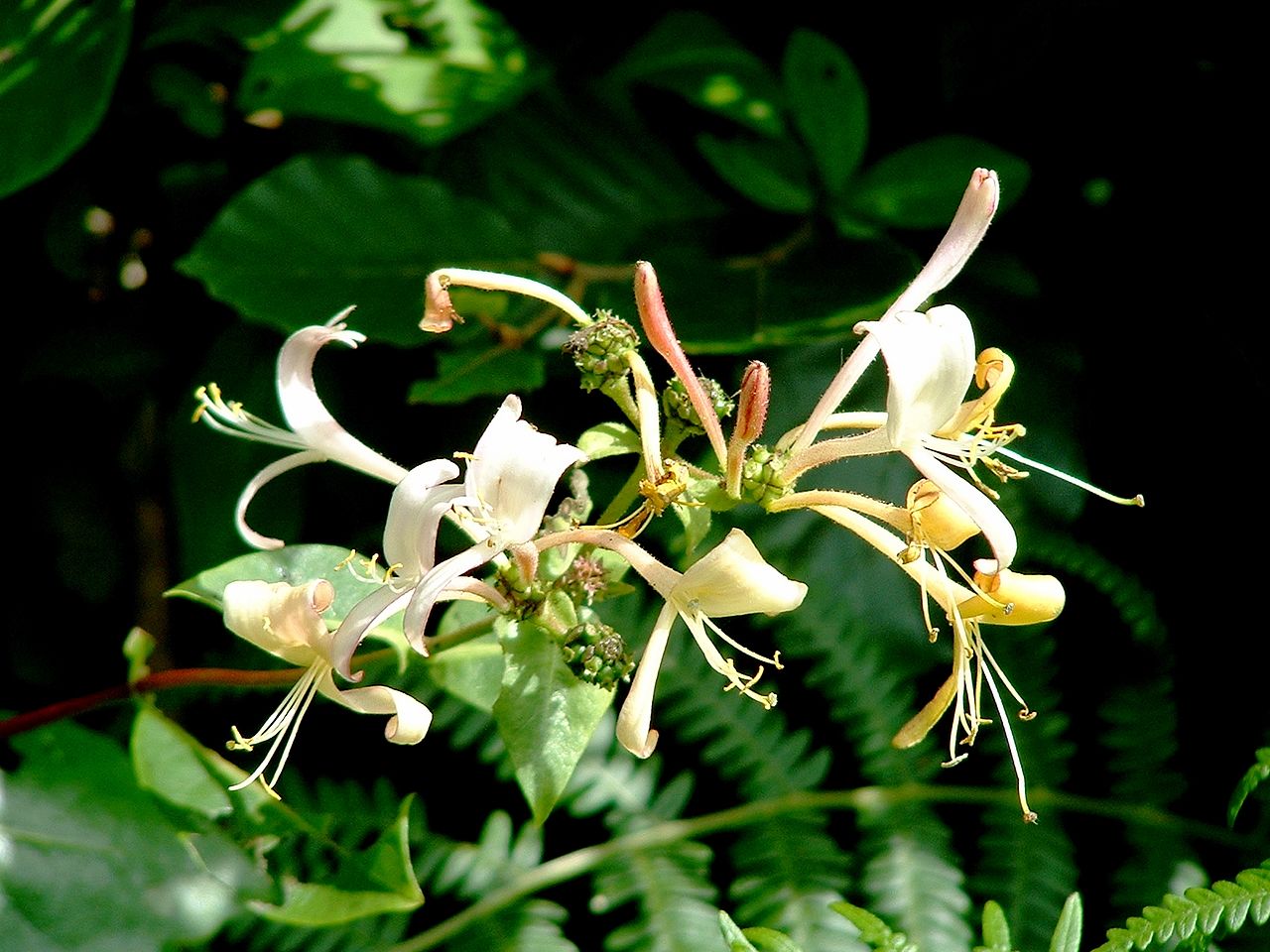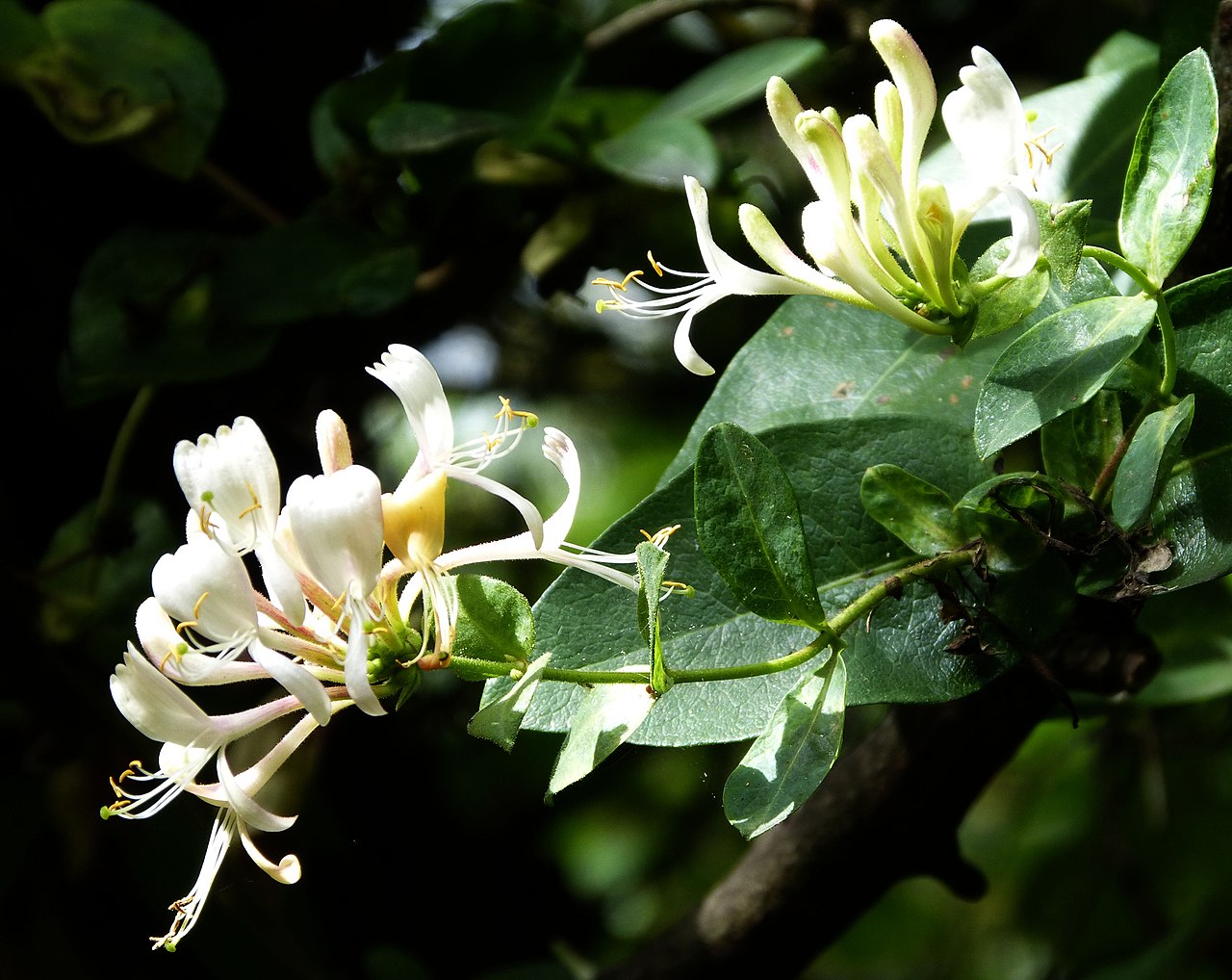
Image - Flickr / joysaphine
Climbing plants are plants that can be used, not only to cover those areas that we do not like, but also to beautify those places that, for one reason or another, are special. Of all there is, the species Lonicera periclymenum It is one of the most interesting for temperate climates, for its rusticity and of course its beauty.
In addition, its magnificent flowers attract insects as beneficial to all plants as bees.
Origin and characteristics of Lonicera periclymenum

Image - Wikimedia / Acabashi
It is a deciduous climbing shrub (loses its leaves in autumn-winter) native to Europe, from the south of the Iberian Peninsula to southern Norway and Sweden, as well as North Africa. It can reach a height of 10 meters or moreas long as it has support to climb on.
The leaves are opposite, lanceolate-elliptical, petiolate and green in color; and its flowers are yellowish, hermaphroditic and zygomorphic. The fruits are red berries, somewhat toxic, so its consumption is not recommended, although in small doses they can be medicinal.
It is popularly known as forest honeysuckle, as it is frequently found in those places. But it also receives other names such as: chupamiel, wild vine, vulgar honeysuckle, periclimeno, samuso, sogüeño or samuso.
What are the care it requires?
If you want to have a copy, we recommend that you provide it with the following care:
Climate
When we go to buy a plant it is important that we know in advance if it can live well in our climate, because this way we can save ourselves troubles and money. In the case of the forest honeysuckle, it is a climber that fortunately for us adapts to a wide variety of climates as long as they are temperate.
This means that it will grow wonderfully in areas where the winters the thermometers drop below 0 degrees at some point, being able to withstand intense frosts without problems, and high summer temperatures.
Location
It has to be placed abroad so that you can feel the passing of the seasons, and in semi-shadow.
Earth
- Garden: grows in soils rich in organic matter, and well drained.
- Flower pot: fill with universal substrate.
Irrigation
La Lonicera periclymenum is a climber that does not resist drought, but neither does waterlogging. That is why it is necessary to water every time the soil dries up, so that it can continue to grow normally.
If we talk about the frequency to follow, this will vary depending on the weather especially, but in principle you should water an average of 3 times a week during the driest and warmest season, and an average of 2 a week the rest of the season. anus.
If you have it in a pot, it is better not to put a plate under it or place it in a pot without holes, since stagnant water will rot the roots.
Subscriber

Image - Wikimedia / OliBac from FRANCEDuring all the warm months of the year the forest honeysuckle, in addition to water, will also need some 'food' in the form of compost or fertilizer. For example, if it is in the garden, it is interesting to add a little guano, compost or mulch regularly every 15-20 days.
On the contrary, if you are growing in a pot, it is better to use fertilizers or liquid fertilizers to avoid worsening the drainage. Of course, you must follow the instructions specified on the product packaging.
Pruning
You can prune it late winter, using pruning tools previously disinfected with pharmacy alcohol or a disinfectant product. Don't forget to clean them after use as well, to prevent infections and keep your plants protected in this way: the spores of fungi, viruses and bacteria are not visible to the naked eye, but that does not mean they are not there 😉.
Remove dry branches and stems, diseased and weak ones. Take the opportunity to cut out those that are getting too long, and those that give it an aspect of 'abandonment'.
Multiplication
Multiply by seeds in autumn-winter (they need to be cold before germinating) and for cuttings in spring.
Seeds
I advise sowing them in seedling trays, filled with universal substrate and putting a maximum of two seeds in each socket. Then, water conscientiously and put it outside, in semi-shade.
In spring they will germinate.
Cuttings
It is the fastest way to get new copies. You only have to cut a piece of stem, impregnate the base with homemade rooters and then plant it in a pot with substrate. Put it outside, in semi-shade, and water.
In a period of about 15-20 days it will emit its own roots.
Planting or transplanting time
In spring.
Rusticity
La Lonicera periclymenum resists frosts of up to -18ºC.
What uses is it given?

Image - Wikimedia / gailhampshire from Cradley, Malvern, UK
It has several uses:
- Ornamental: it is a perfect plant to cover lattices, garden arches, pergolas. You can also work as a bonsai, or have it as a potted shrub.
- Medicinal: in low doses, the fruits can be consumed as they have purgative and diuretic properties. Although yes, they can also cause digestive problems, heart or even death in case of overdose, so its consumption is NOT recommended without first consulting a specialist doctor.
What do you think?